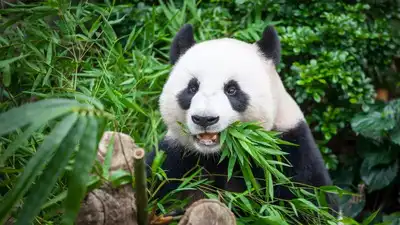ARTICLE AD BOX

In a world where attention spans are short and content moves fast, it's often the unusual visuals that grab our eyes first, and nature doesn’t disappoint. One of the most fascinating sights? Baby animals that look nothing like the adults they grow into.But it’s not just about looking cute or odd. These dramatic changes– whether it’s body shape, colour, or texture– are often part of an evolutionary strategy to help the young survive in their most fragile stage of life.From shapeshifting insects to colour-changing birds, here are six baby animals whose early looks might just surprise you.Antelope calvesBaby antelopes don’t look much like the graceful adults we usually see. Their fur is dull and patchy at first, which helps them stay hidden in grasslands or forests.
This natural camouflage keeps them safe from predators. As they grow, their coat becomes smoother and lighter, and in many species, little horns start to appear, slowly giving them the look of a full-grown antelope.Crab larvaeCrabs start their life looking nothing like the ones we find on the shore. They begin as tiny, see-through larvae called zoea, floating in the ocean. With long spines to help them stay afloat, they look more like specks than crabs.
Over time, they change shape, growing hard shells, claws, and jointed legs that give them their familiar adult look.Hoglets

Baby hedgehogs, called hoglets, are born without the sharp spines we usually associate with them. Instead, they have soft skin and barely-there spines that start to show within hours. These soft spines are replaced later with stronger ones. Within a few weeks, they slowly start looking more like adult hedgehogs.Panda cubsNewborn panda cubs look nothing like the fluffy adults we know. They’re tiny– just a few hundred grams– pink, hairless, and very delicate. It takes a few weeks for their fur to grow and their black-and-white markings to appear. The change is slow, but it’s all part of helping them survive and grow stronger.Tadpoles

Frogs don’t start off as frogs– they begin life as tadpoles. These little swimmers have tails and gills and live completely underwater.
As they grow, their body goes through big changes: legs appear, lungs form, and their tail slowly disappears. In time, they leave the water as young frogs, ready for life on land.Caterpillars

Before they become butterflies, they start as caterpillars– small, crawling creatures that spend their days eating leaves. This stage is all about growing and storing energy. Then, they form a cocoon or chrysalis, where they go through a complete transformation. What comes out is a butterfly– something that looks completely different from the caterpillar it once was.



.png)
.png)
.png)
















 3 hours ago
5
3 hours ago
5









 English (US) ·
English (US) ·